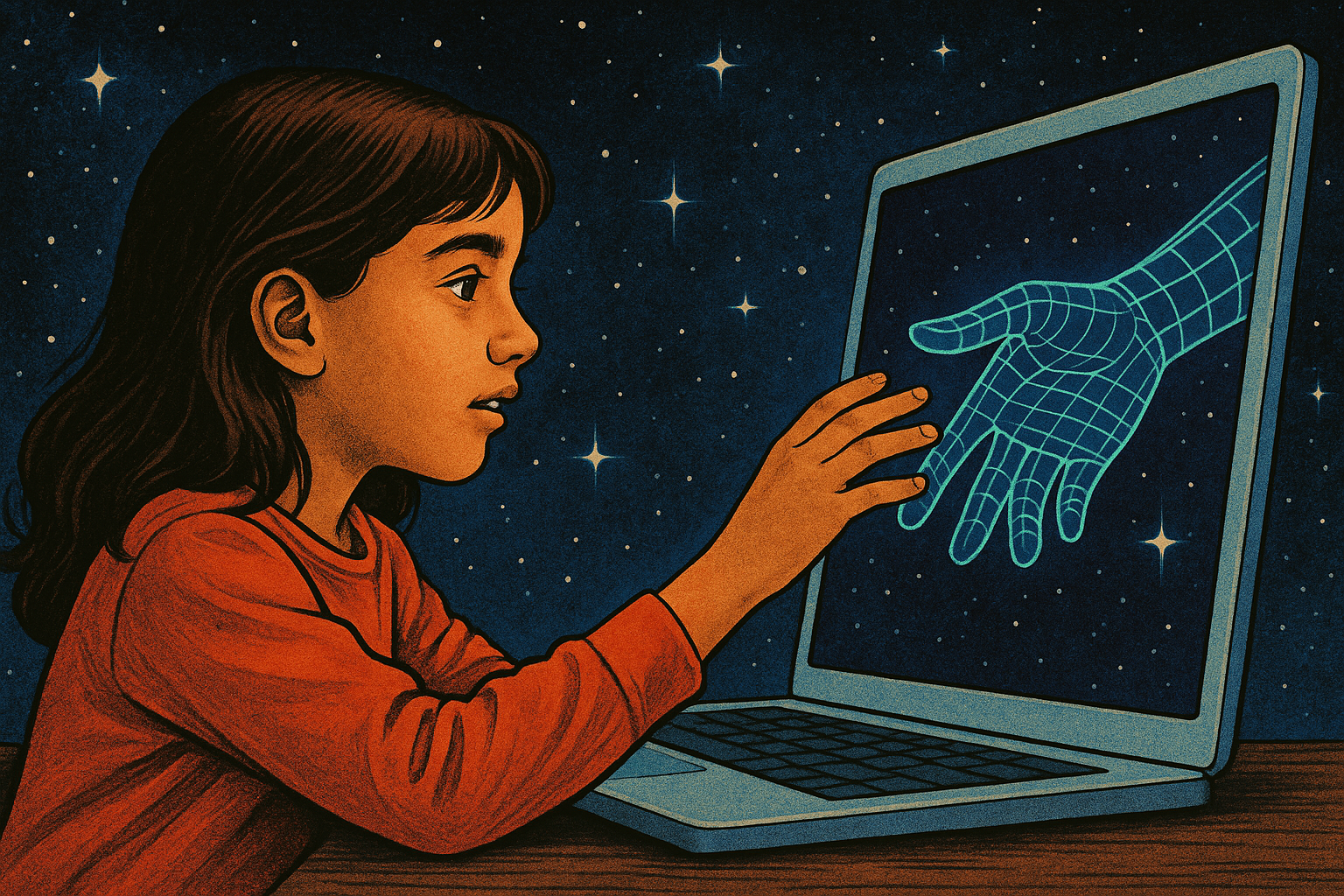“Please and Thank You, Computer”: What Star Trek Taught Me About AI and Intentional Design

When I was a child, I watched a brief exchange from an episode of Star Trek: The Next Generation that has stuck with me. In “Q Who?”, a junior officer named Sonya Gomez approaches the replicator and says, “Hot chocolate, please.” Her superior, Geordi La Forge, teases her: “We don’t ordinarily say please to food dispensers around here.” Sonya responds without missing a beat: “Well, since it’s listed as intelligent circuitry, why not? After all, working with so much artificial intelligence can be dehumanizing, right? So why not combat that tendency with a little simple courtesy? Thank you.”
When the episode first aired in 1989, it didn’t resonate the way it now does, but that moment helped shape my early perception of artificial intelligence not just as a tool, but as something worthy of respect or at least of mindful interaction. Fiction taught me that how we treat the things that help us matters, even if they don’t have feelings.
Today, that childhood instinct feels more relevant than ever. AI is no longer science fiction. Children are taught to say “please” and “thank you” to those who help them: to teachers, to caregivers, to crossing guards. When an intelligent system provides help or guidance, a child doesn’t necessarily distinguish it from any other kind of helper. They respond with the manners they’ve learned: simple courtesy in return for assistance. What might seem odd to adults, like saying “thank you” to Alexa, feels entirely natural to a child who sees value in every helpful presence.
As instructional designers, we aren’t just shapers of learning. We’re learners too, and I hope this post sparks a learning moment for you the way hearing Sonya defend her kindness did to me. What we build and how we build it sends messages that go far beyond a lesson’s learning outcomes. Every interaction we design helps shape how learners view not only the subject at hand, but also the world they live in. We’re not just teaching facts. We’re selecting the examples, images, and voices that learners encounter. Are our scenarios inclusive? Do our images reflect a diverse and global reality? Are we teaching curiosity, empathy and critical thinking? These are choices, not afterthoughts, and the cumulative effect of those choices can leave a lasting impression.
And just as we must be intentional with our content choices, we also need to be intentional with how we use AI in the learning experiences we create. Whether we’re using AI to generate content, support feedback loops, or guide learners through complex problems, our design decisions model the relationship we think learners should have with these tools. Are we positioning AI as a collaborator, a tutor, a resource, or just a faceless function? Are we encouraging critical engagement or passive reliance? Being polite to AI isn’t about pretending it’s human. It’s about preserving our own humanity.
That’s what Sonya Gomez expressed in 1989. And that’s what I’m still learning today. A little simple courtesy, especially toward the tools that increasingly shape our lives, isn’t just about manners. It’s a reflection of intentionality. And in an age when technology is everywhere, intentionality might be the most powerful design tool we have.
Want to Learn More?Connect with your institute's D2L Customer Success Manager or Client Sales Executive, or reach out to the D2L Sales Team for more information about how Learning Services can support you on your learning journey.
التعليقات
-
Thank you for sharing this. I appreciate the reminder, "Whether we’re using AI to generate content, support feedback loops, or guide learners through complex problems, our design decisions model the relationship we think learners should have with these tools. Are we positioning AI as a collaborator, a tutor, a resource, or just a faceless function? Are we encouraging critical engagement or passive reliance? Being polite to AI isn’t about pretending it’s human. It’s about preserving our own humanity."
Modeling the relationship we want learners to have with the tools is an important task. We are equiping students for what goes beyond the course content.

